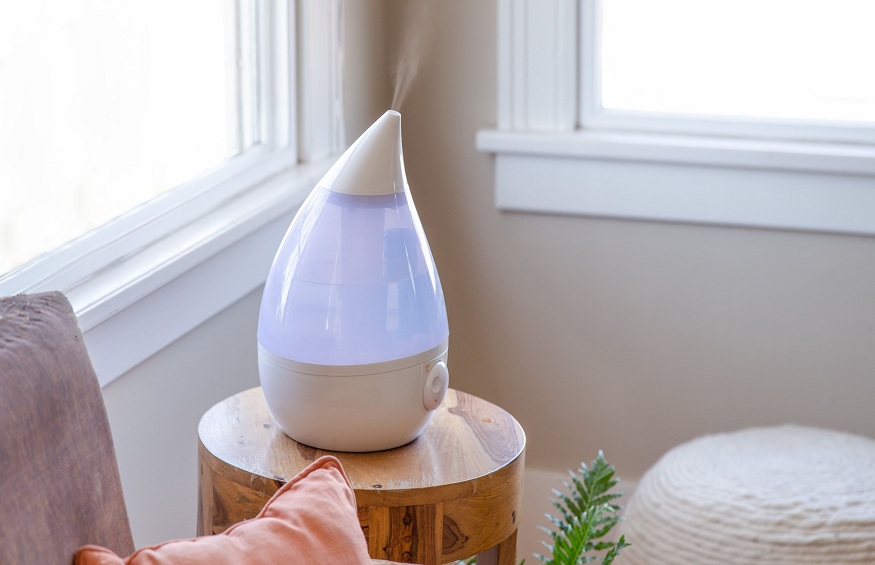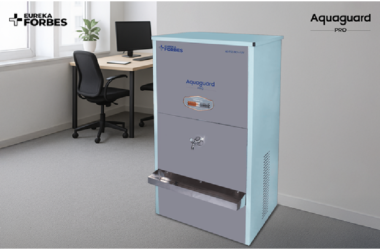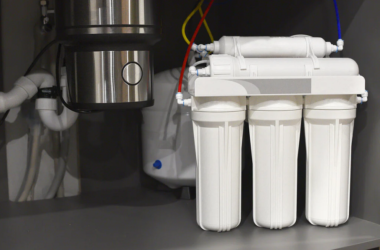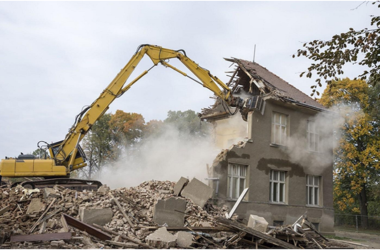Do you ever have the impression that your mouth has been packed with cotton balls when you wake up in the morning? Do you keep your lotion or chapstick at arm’s reach at all times? Have you discovered that your wood flooring are warping or your furniture is splitting earlier than it should be?
If any of this sounds similar, a humidifier may be beneficial. We hear you wondering, “But what do humidifiers do?” Continue reading to discover more about these gadgets and the advantages they may provide.
What Is a Humidifier and How Does It Work?
A humidifier is a device that raises the humidity level in your house. Boiling a pan of water on the stove or hanging wet towels near a heating vent are two simple methods to achieve this. However, most individuals who are serious about increasing their home’s humidity invest in a specialised humidifier.
Humidifiers come in a variety of styles, including evaporative, steam, ultrasonic, and impeller. They come in a variety of sizes to fit a variety of spaces. There are a lot of advantages to utilising humidifiers, which we’ll go over in more detail later.
The quantity of water in the air compared to the amount of water the air can retain is referred to as relative humidity. So, if the humidity is 50%, the air can only hold half of the water it can store. The relative humidity of the air we breathe has an influence on our comfort and how much moisture we lose through our skin.
Low humidity can cause static electricity to build up in your house. When you move through dry air, static builds up on your skin. The energy will then zap into the conductive material whenever you touch something metal, startling you.
Household Humidity
Low humidity might make your home feel cooler than it actually is. If you’ve ever spent a summer near the ocean, you know how much hotter a day can seem with a little humidity. In your home, decreased humidity might make your house feel colder, even if the thermostat is set at a higher degree.
Lower humidity can also cause wood to lose moisture, causing floors and furniture to shrink or warp. You may notice that the borders of your wallpaper are peeling away. Mold development and other structural issues might result from damaged wallpaper.
Humidifiers Have Health Benefits
If you often use chapstick or lotion to your skin, having a humidifier in your home can help restore moisture to your skin. If you’re prone to nosebleeds, it can also help relieve dry throats and prevent nosebleeds. In the winter, when the humidity is reduced owing to lower temperatures, you may discover that these issues are exacerbated.
A humidifier might help you feel better if you have sinus problems or a head cold. They can help to relieve inflamed vocal chords and dry coughs. A humidifier is not a panacea, and if your symptoms continue, you should visit your doctor; nevertheless, it is a prudent precaution to take before making an appointment.
The Advantages of Humidifiers in the Home
Lowering your energy expenses is one of the most significant advantages of having a humidifier in your house. Lower humidity makes you feel colder, so you may find yourself turning on the heat more frequently. You may make your present temperature seem warmer while lowering your energy use by slightly increasing relative humidity.
A humidifier can also make it simpler to keep hardwood floors clean. Floors should be refinished every few years to maintain them in good shape, but if they’re shrinking and cracking, they’ll need repair more frequently. Maintaining correct moisture levels on the boards can assist avoid damage and reduce the need for chemical conditioners.
The Components of a Humidifier
Humidifier anatomy varies significantly according on the kind, however they all have a few characteristics. To begin with, they will all have a water reservoir or basin, which is generally situated on the device’s bottom. This is where your humidifier will draw moisture from, which it will then spread throughout your home.
A humidifier will almost always incorporate a fan or a steam jet. This allows the moisture generated in your house to evaporate more quickly, ensuring that your home maintains the correct humidity levels. Many versions also have an ultraviolet light that kills germs in the water as it flows through the humidifier.
Humidifier Dimensions
Humidifiers are available in a range of sizes, depending on where and how they will be utilised. The tiniest humidifiers are travel-size and may fit into a carry-on luggage. If you want to visit somewhere with very low humidity or if you have sensitive skin, they are an excellent choice.
Humidifiers that can accommodate one room are the next size up in humidifiers. These are the most prevalent, and you may have a few in high-traffic locations around your home. Finally, whole-house humidifiers connect directly to your HVAC system for constant comfort throughout your home.
Humidifier via Evaporation
The evaporative humidifier is one of the most basic types of humidifier. Rather of employing heat or any vaporisation method, they rely only on evaporation science. A basin of water on the counter may operate in the same manner as these humidifiers, but not as well.
To properly disperse humidity out into the environment, an evaporation humidifier incorporates a wicking filter and a fan. These humidifiers are self-regulating, which means they will regulate the amount of moisture they put into your home on their own. When humidity reaches a particular level, less moisture evaporates into the air, bringing everything back to balance.
Humidifier with Steam
A warm humidifier, such as a steam humidifier, is a form of warm humidifier. This gadget boils water and then releases the steam into your room, as the name implies. This has the same effect as taking a hot shower while closing the bathroom door.
Steam humidifiers are among the most basic types, and hence the most cheap. For a more therapeutic experience, you may add medicinal inhalants or essential oils to these humidifiers. However, because these humidifiers get quite hot, they aren’t a good choice if you have little children.
Impeller
Rather than utilising heat to turn water to steam, an impeller utilises a fan and speed to split it up into droplets. A spinning disc flings water towards a comb-like diffuser in these humidifiers. This diffuser turns water into a fine mist that can drift away as a cool fog in the air.
Because they employ a very basic mechanism, impeller humidifiers are typically a more cheap option. They’re also ideal for families with little children because they’re entirely safe and don’t cause burns. These humidifiers are only good for single rooms, and if they’re used too much, they might cause problems for those with allergies and asthma.
Humidifier using Ultrasonic Waves
An ultrasonic humidifier adds humidity to your space by vibrating and producing a cool mist. A metal diaphragm, similar to that of a loud speaker, vibrates at a high frequency in the gadget. Water droplets form, which can then rise into the air as a chilly fog.
These humidifiers are absolutely quiet, regardless of the method they employ. They are also cool, making them suitable for use in households with little children. If your water has any minerals or bacteria, they will be sprayed into the air with your water, causing dust or aggravating allergies.
Humidifiers: Roller vs. Drum
Humidifiers can transport water droplets into the air in one of two ways: roller-type or drum-type. A moving belt, similar to that seen on a belt sander or a grocery store conveyor belt, is used in the roller type. A fan lies beneath the belt, blowing moisture onto it, which is then thrown up through a grate at the device’s top.
A drum humidifier operates similarly to a roller humidifier, but on a horizontal rather than vertical axis. The fan blows over the top of a spinning drum within the humidifier, which rotates like a wheel. This drum has wet evaporator pads, and when it rotates, moist air is pushed out the humidifier’s end.
Which Type Should You Pick?
The type of humidifier you employ is determined by your circumstances and requirements. If you have little children in your house on a frequent basis, an evaporation, impeller, or ultrasonic humidifier may be the best option. All of these are cool to operate and provide no risk of burning.
A steam humidifier may be beneficial for you if you have severe allergies or asthma. This humidifier boils water while it operates, killing any bacteria that may be present in the humidifier basin. It’s still vital to clean your humidifier on a regular basis, but people with more sensitive respiratory systems may benefit from this extra precaution.
When it comes to using a humidifier safely, one of the most common safety issues is burns. If you have a steam humidifier, keep it out of the reach of youngsters and dogs. Allow the unit to cool completely before handling or cleaning it.
Mold or germs are another big concern with humidifiers. To avoid mould, mildew, and bacteria from developing in the tank, be sure to clean the reservoir on a regular basis. However, you must maintain your humidifier on a low level to avoid moisture from collecting on the walls and mould growth in your sheetrock.
Keeping a Humidifier in Working Order
Cleaning your humidifier begins with disassembling it and wiping out the reservoir on a regular basis. Once a week, wash it with soap and water and allow it dry fully before replacing it. You should also clean your filters once a week and completely replace them every two to three months.
For more information, visit: https://smzsite.com/






